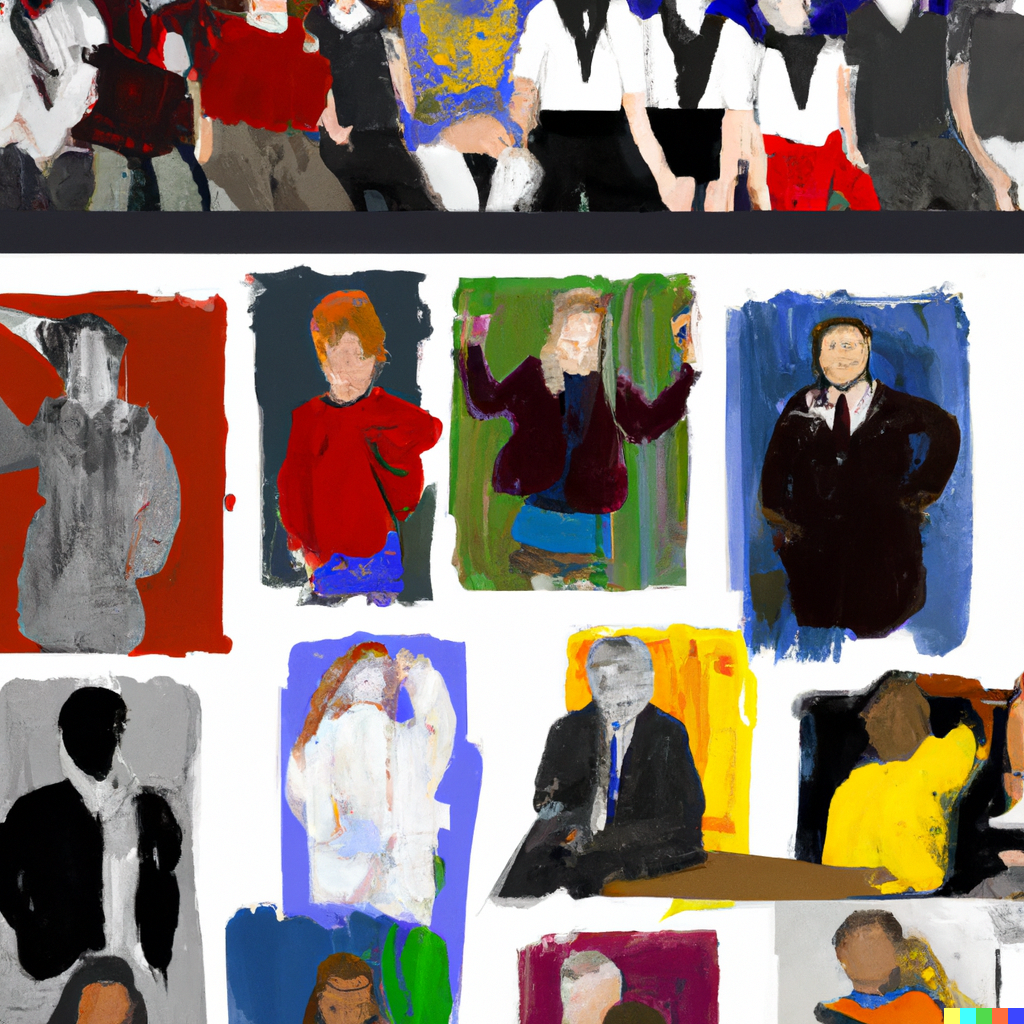
a-class-photo-of-faceless-students-in-the-styles-of-Monet-Rembrandt-Kandinsky-and-Warhol prompt by author
I was thinking about that kid and I found myself getting emotional.
You know the one. We all do. Whether the name(s) or face(s) you thought of are in your class this year or not. We all have one or two students who popped in there almost immediately. I am not going to sugar coat this either because it got emotional. When I think about that kid, my feelings range quite widely here. Anger, joy, sadness, peace, et al have all staked their claims in my amygdalae and other rose coloured spaces in my emotional thought centre.
My first “that kid” came when I was quite new to teaching. I probably owe them an apology for pushing too hard about their studies without considering how hard it must have been to be truly trying their best, but not meeting the expectations of which I was thoroughly* convinced were so clearly taught and put within reach. Like I mentioned above, an apology has been uttered on a couple of occasions for that learner into the universe.
There are two other feelings that happens sometimes, relief and angst. Relief that you were able to make it through a year together and grow. Angst over what I missed or, straight up, got completely wrong. My most recent that kid reads like this:
Is quiet – too quiet.
Sticks to the sidelines as if crazy glued there.
Struggles to start something, and struggles even more to finish.
Whether it is a transition, a sentence, or a math challenge mine has got me thinking about what I need to do differently next time because there will be a next time no matter how hard I work to learn the lessons from the past to use now and in the future.
As teachers, I’ve noticed that we tend to be pretty hard on ourselves much more often than we realize or care to admit. It’s who we are as reflective practitioners who seek to make things better for our learners. I have noticed that we fret far more about any flaws in our work even when there are few if any cracks in our foundations. We are constant works in progress alongside our students and we wear it on our sleeves when it doesn’t go well.
Sometimes, that kid gifts you some victories too. You see, all that time spent investing in that kid can turn out to be a life enriching moment for you as an educator and even more so for that kid as a scholar. Since my first that kid nearly 15 years ago, I have marveled at hearing from students who are completing degrees at amazing schools and starting to write the next chapters of their lives. This week I ran into a student who will be doing just that.
To be honest, it wasn’t all sunshine and lollipops with this particular that kid. If poor choices, bad behaviour, and work avoidance were credit courses, this learner would be top of the class. Fast forward 6 years and they are about to begin a very challenging degree program at a top university. That could have only happened with significant support, responsibility, accountability, and commitment. In other words, the exact opposite to where they were back then. So what turned this scholar around? How did the switch get flipped, and who did the flipping? I was certainly thrilled to receive such news knowing that there would be more good things to come as a result of them finding their stride as a student. Whoever helped this “that kid” turn over a new leaf has changed one young person’s life not for good, but for great.
I am also aware that there are some who will never get to experience an about face like the that kid above, and I need to take ownership of that and work to improve going forward. Maybe my next that kid will not fall through the cracks through their education? I know that there is always room to improve what and how we do this job of ours. I know that teachers have countless conversations in order to find and fit the complex puzzle pieces we know as students together. I know that there is no single strategy or approach that will reach 100% of our students. What we need to remind ourselves is that we come pretty close to perfection, and we do it across a decade plus of siloed collaboration, between the panels, whether we realize it or not.
When you think about it, each of our students could have as many as 50 teachers over their K to 12 careers. Of course homeroom teachers occupy the bulk of those first 10 years yet that still means there are countless points of influential interaction to be had between an entire cast of educators all working in concert to make sure each that kid gets and gives the best.
This job asks us to accept and understand that we often will never know how the work we put in with our students will support them in the future. Closure is not a luxury many elementary teachers ever have once our students move onward and beyond our schools, but that should not bring us down because there is always that kid who takes the time, after several years have gone by, to reach out and connect again: to share how much they appreciated what was taught to them in and out of the classroom all those years ago.
*On a random note: the word thoroughly breaks down into tho roughly. So now my idea of thorough will always be considerate of whether I was thorough or tho rough


